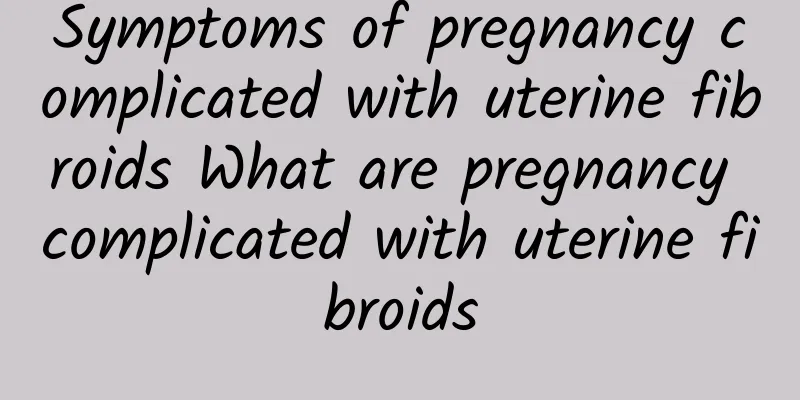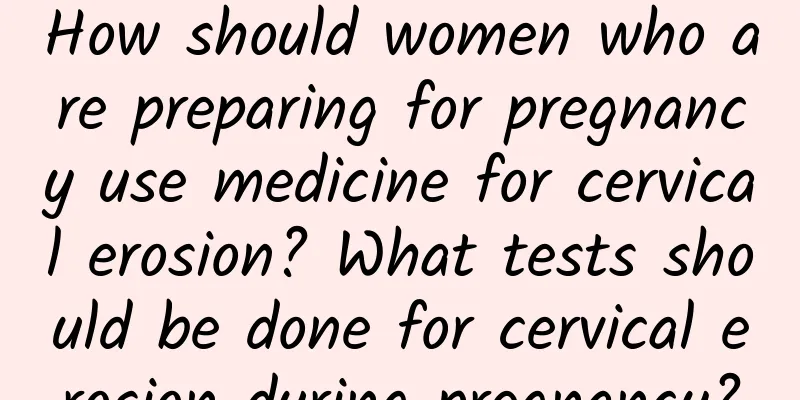Symptoms of pregnancy complicated with uterine fibroids What are pregnancy complicated with uterine fibroids

|
Uterine fibroids are one of the most common benign tumors in the female reproductive organs and one of the most common tumors in the human body. They are also called fibroids and uterine fibroids. Because uterine fibroids are mainly composed of the proliferation of uterine smooth muscle cells and a small amount of fibrous connective tissue exists as supporting tissue, they are more accurately called uterine leiomyoma. Uterine fibroids. So what are the symptoms of pregnancy complicated by uterine fibroids? Pregnancy complicated with uterine fibroids can cause abdominal pain and uterine fibroids. During pregnancy, uterine fibroids grow rapidly and are prone to red degeneration and severe abdominal pain. Generally speaking, uterine fibroids do not cause pain, but many patients may feel lower abdominal swelling and back pain. When the pedicle of the subserosal fibroids is twisted or the uterine fibroids undergo red degeneration, acute abdominal pain may occur. Endometriosis or adenomyosis may cause dysmenorrhea. Uterine fibroids grow rapidly during pregnancy and are prone to degeneration. Late pregnancy is complicated by malposition of the fetus. During delivery, fibroids often affect uterine contractions, which can lead to prolonged labor or delayed delivery. When fibroids grow in the lower uterine segment, they can hinder the descent of the fetus, leading to dystocia and postpartum hemorrhage. However, if the fibroids undergo degeneration during pregnancy, especially red degeneration, acute abdominal pain or the fibroids are located low, affecting the descent of the fetus, in this case, a cesarean section is required, and the removal of the fibroids or hysterectomy is decided according to the specific circumstances. In short, when uterine fibroids are combined with pregnancy, although most pregnant women can go through pregnancy and delivery smoothly, some pregnant women are prone to complications. Therefore, women with fibroids should go to the hospital for examination in time after pregnancy, and have prenatal examinations and follow-up on time. If the fibroids grow in the upper part of the uterus, do not affect delivery, and have no symptoms and changes during pregnancy, further examination and treatment can be performed after delivery. |
Recommend
How to prevent pelvic peritonitis
Pelvic peritonitis is the most common infectious ...
What harm does dysmenorrhea have on women's health?
Dysmenorrhea is a phenomenon that many women have...
What's up with the yellow belt?
The appearance of yellow discharge can be confusi...
Can congenital absence of vagina be cured by taking Chinese medicine?
As the lives of patients with congenital absence ...
What is hyperprolactinemia?
What exactly is hyperprolactinemia? Hyperprolacti...
The manifestations of cervicitis patients in acute and chronic conditions are different
The symptoms of cervicitis are different in acute...
Treatment of left ovarian cyst
The treatment of left ovarian cysts varies depend...
Delicious food therapy helps patients with pelvic inflammatory disease recover soon
Pelvic inflammatory disease is a common gynecolog...
Simple mild symptoms of cervicitis
Simple mild symptoms of cervicitis: In daily life...
Cost of treating early hyperprolactinemia
Since hyperprolactinemia was discovered in humans...
What foods can I eat if I have cervical erosion?
What foods can you eat for cervical erosion? Cerv...
Drugs for treating endometrial tuberculosis
How to correctly treat our endometrial tuberculos...
What are the treatment methods for gynecological cervical erosion? 3 methods are effective in treating cervical erosion
People all suffer from diseases, especially for f...
Is micro-tube visual painless abortion good?
For women nowadays, the phenomenon of unexpected ...
What are the symptoms of congenital absence of vagina and how to diagnose it
What are the symptoms of congenital absence of va...









